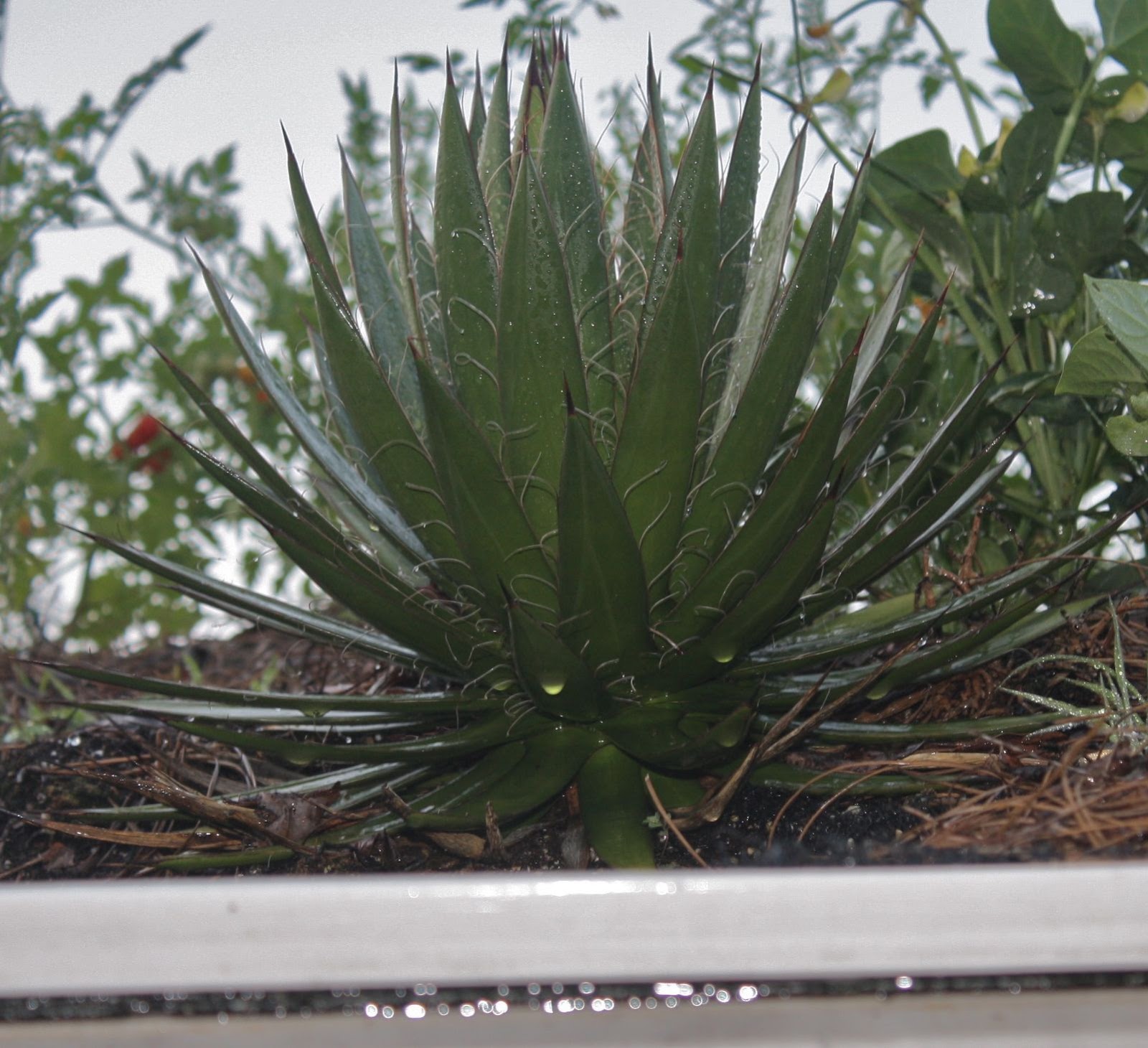Nature offers the finest examples for us to look to when resolving green roof, or any other for that matter, issues. Today I want to mention plants that catch air moisture, such as dew, and help 'irrigate' a green roof. Let's look at some of my favorite green roof plants, Yucca and Agaves.
 |
| Floria extensive, sloped green roof |
 |
| Green Roof Plants, Yucca and Agaves - note the hairs and clover, a nitrogen fixer |
Likewise, with waxy, tough leaves and CAM (Crassulacean Acid Mechanism) photosynthesis, they can serve as the perfect green roof edge wind-break perimeter plant.
Yucca and Agave biomimicry tells us high dew catcher surface area to air mass contact is most efficient for air water vapor to occur.
Many yuccas and agaves thrive in hot, dry, windy areas and make excellent choices for green roof plants.
Yucca filamentosa, Adam's needle is a favorite green roof plant of mine, reliably hardy in the freezing cold temperatures, evergreen, very drought tolerant, a dew catcher and the perfect CAM perimeter plant.
Many yuccas and agaves thrive in hot, dry, windy areas and make excellent choices for green roof plants.
Yucca filamentosa, Adam's needle is a favorite green roof plant of mine, reliably hardy in the freezing cold temperatures, evergreen, very drought tolerant, a dew catcher and the perfect CAM perimeter plant.
 |
| Yucca filamentosa makes an excellent green roof plant for Florida |
Planted in mass, Yucca filamentosa acts as a green roof parapet, allowing interior plants a more welcoming ecosystem for growing. This green roof plant has not only survived, but thrived on some of our older green roofs!
Yucca filamentosa also has long hairs growing from the leaf edges, allowing for water vaopr in the air to collect as the humid breezes flow across the plant.
Turbulence is another factor necessary to help drop the condensed air water vapor from the catcher to the green roof soil below.
 |
| Florida Green Roof Plants Yucca and Agaves, Note the hairs along the plant edges that facilitate dew sequestration |
Success of a nature irrigated green roof depends heavily on sourcing a steady supply of water through rainfall, fog, dew and even frost. Understanding biomimicry based green roof planting layout allows for important air water vapor collection.
Additionally, understanding the principles behind Agave's and Yucca's' water capture successes lie also in an understanding of air humidity. Humidity is the amount of water vapor in the air.
Humidity is an important source of irrigation for nature irrigated green roofs and is often present when rain is lacking. Humidity is often described in terms of ‘relative humidity’ and ‘dew point’.
Relative humidity is the phrase commonly used by weather reporters to communicate the percentage as the amount of actual water vapor in the air divided by the amount of water vapor the air could hold.
A relative humidity of 75% means air contains 75% of the amount of water vapor possibly held.
 |
| Yucca acts as a dew catcher to provide moisture to other Florida green roof plants |
Dew point refers to lowest air temperature where water vapor remains in vapor form. Once the ambient air temperature reaches the dew point temperature the water vapor condenses into dew or liquid.
Dew and fog reference and collection resources available on the web include;
- Fogquest.org is a great informational resource on capturing dew and fog
Air humidity can be a significant component in the irrigation of any green roof system. Consider those months with lower than average precipitation and check to see if dew occurs frequently. Validate the average relatively humidity percentages.
Think of the times you have walked across a lawn in the morning to find your shoes soaking wet.
Research dew and fog collection websites. Look to the green roof plants you work with to see what species appear to accumulate dew.
Mimic nature. Mimic the Yuccas and Agavaceae.
Think of the times you have walked across a lawn in the morning to find your shoes soaking wet.
Research dew and fog collection websites. Look to the green roof plants you work with to see what species appear to accumulate dew.
Mimic nature. Mimic the Yuccas and Agavaceae.
1 comment:
Great read!
Post a Comment